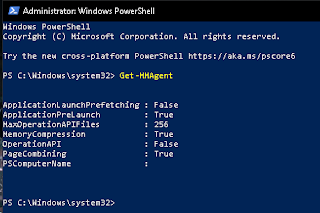HOW TO CHECK MEMORY COMPRESSION STATUS IN POWERSHELL
FIRST COPY AND PASTE THE CODE GIVEN BELOW IN THE POWERSHELL THEN HIT ENTER
memory compression status
Computer memory is a vital component of any modern computer system. In this article, we'll take a look at how memory compression works, what its benefits are, and whether or not it's currently enabled on your system.
how to check memory compression status in windows
To check your memory compression status in Windows, open Task Manager and go to the Performance tab. Under Memory, you will see a number next to Compressed. This number represents the percentage of your total memory that is currently being compressed.
how to disable memory compression in Windows 10
Windows 10 uses a process called memory compression to help free up memory and improve performance. This process can sometimes cause issues, so you may want to disable it.
To disable memory compression in Windows 10, you need to go into the Registry Editor. To do this, press the Windows key + R on your keyboard, type "Regedit" into the Run dialog box, and press Enter.
In the Registry Editor, navigate to the following key:
HKEY_LOCAL_MACHINE\SOFTWARE\Policies\Microsoft\Windows\System
On the right-hand side, find the entry for "EnableCompression", and change its value from 1 to 0. Once you've done this, close the Registry Editor and restart your computer for the changes to take effect.
Disabling memory compression can help improve performance on your computer. However, it's also important to make sure that you have enough memory available. If you're constantly running out of memory, you may want to add more RAM to your computer.
how to enable memory compression in Windows 10
Windows 10 offers a new feature called memory compression which helps to improve the performance of your computer by compressing data in memory. This can free up some memory and help your computer to run faster.
To enable memory compression in Windows 10, you need to open the Performance Monitor. You can do this by searching for "Performance Monitor" in the Start menu.
Once you have opened the Performance Monitor, you need to expand the "Memory" node. Under the "Memory" node, you will see an option called "Memory Compression". Double-click on this option to open the properties window.
In the properties window, you need to enable the "Enable memory compression" option. You can also set the level of compression that you want. The higher the level of compression, the more data will be compressed in memory. However, this can
Windows 10 has a new memory compression feature that can help improve performance on devices with low amounts of RAM. To enable this feature, open the Settings app and go to the System section. Then, click on the "Advanced" tab and scroll down to the "Performance" section. Finally, click on the "Memory Compression" option and select "Enabled."
also lead to a decrease in performance.
Once you have enabled memory compression, you need to restart your computer for the changes to take effect. After restarting your computer, you will notice a performance improvement.

